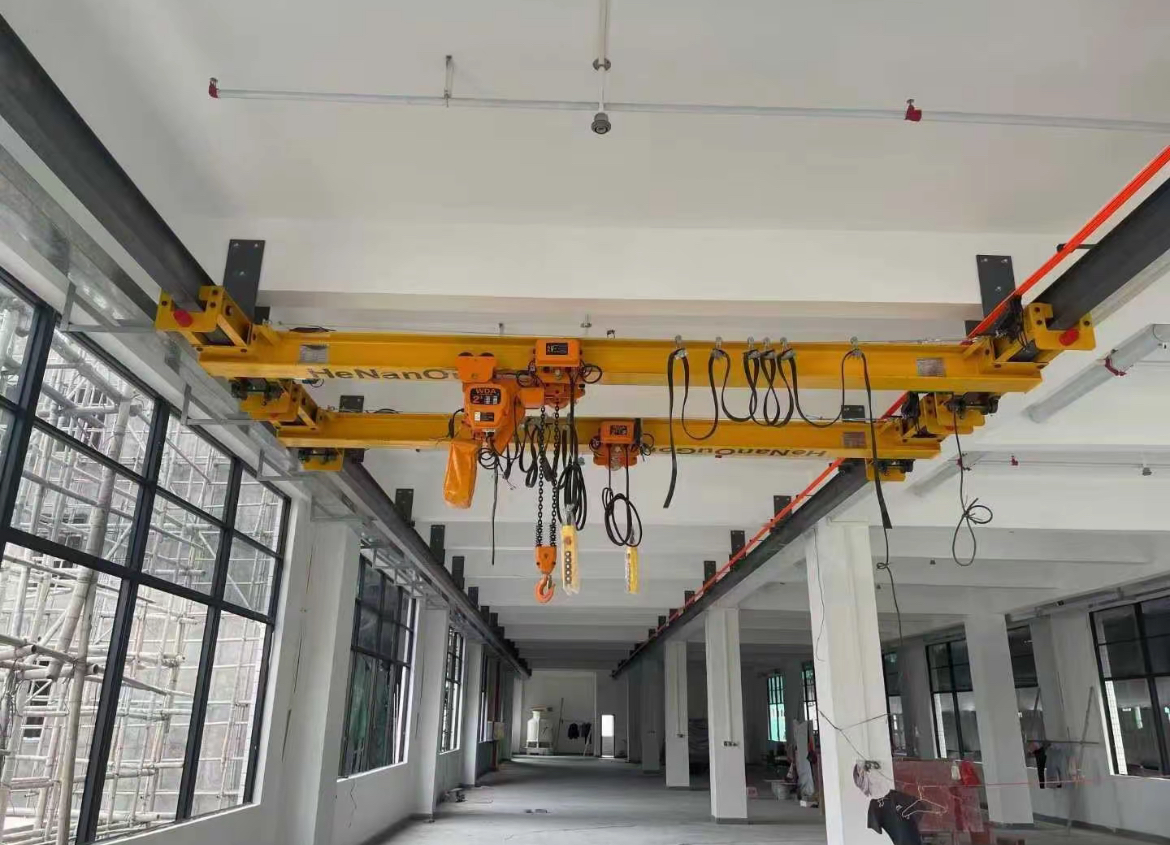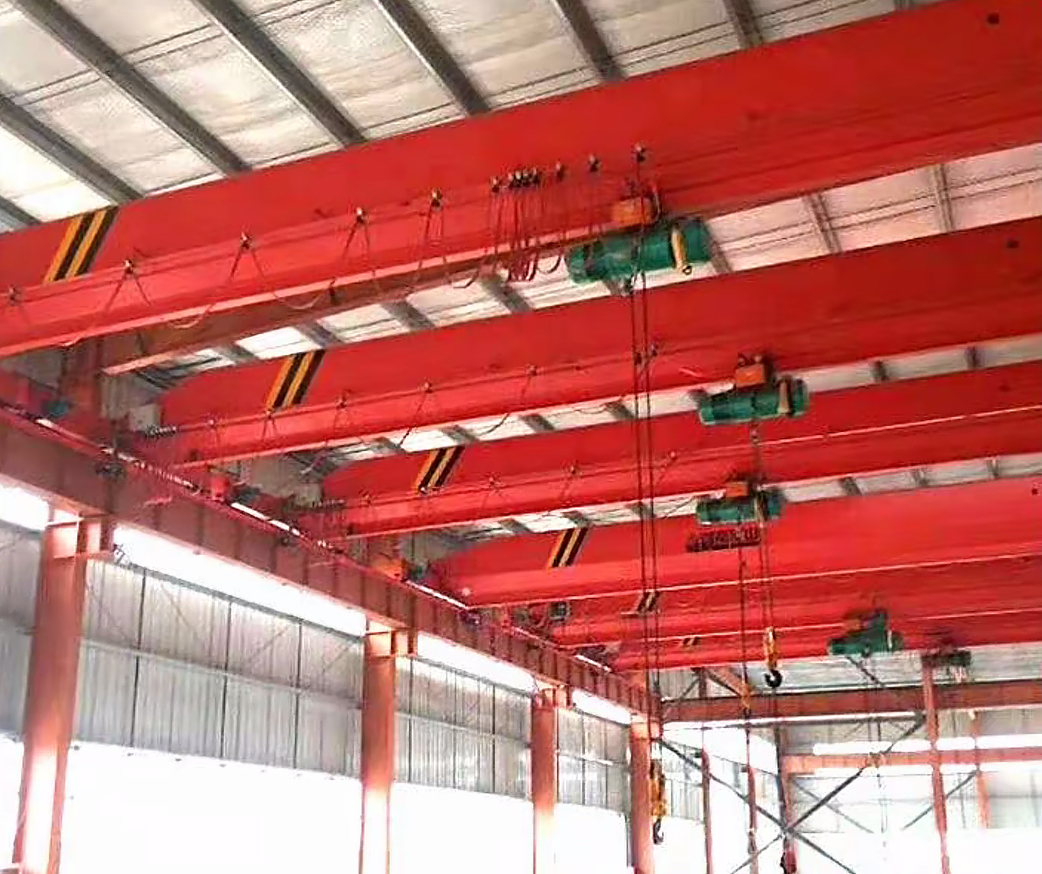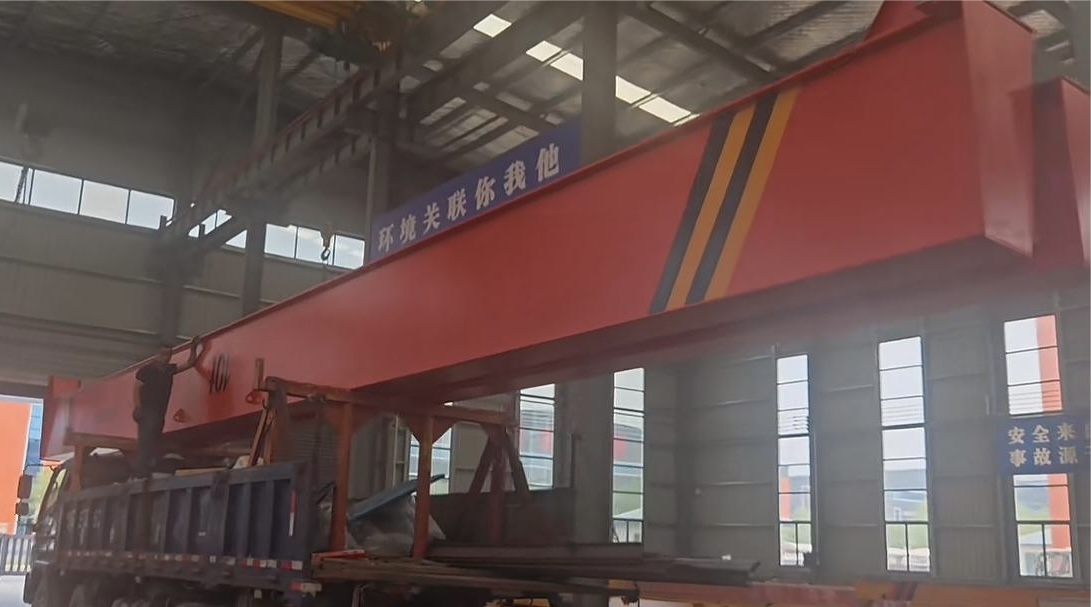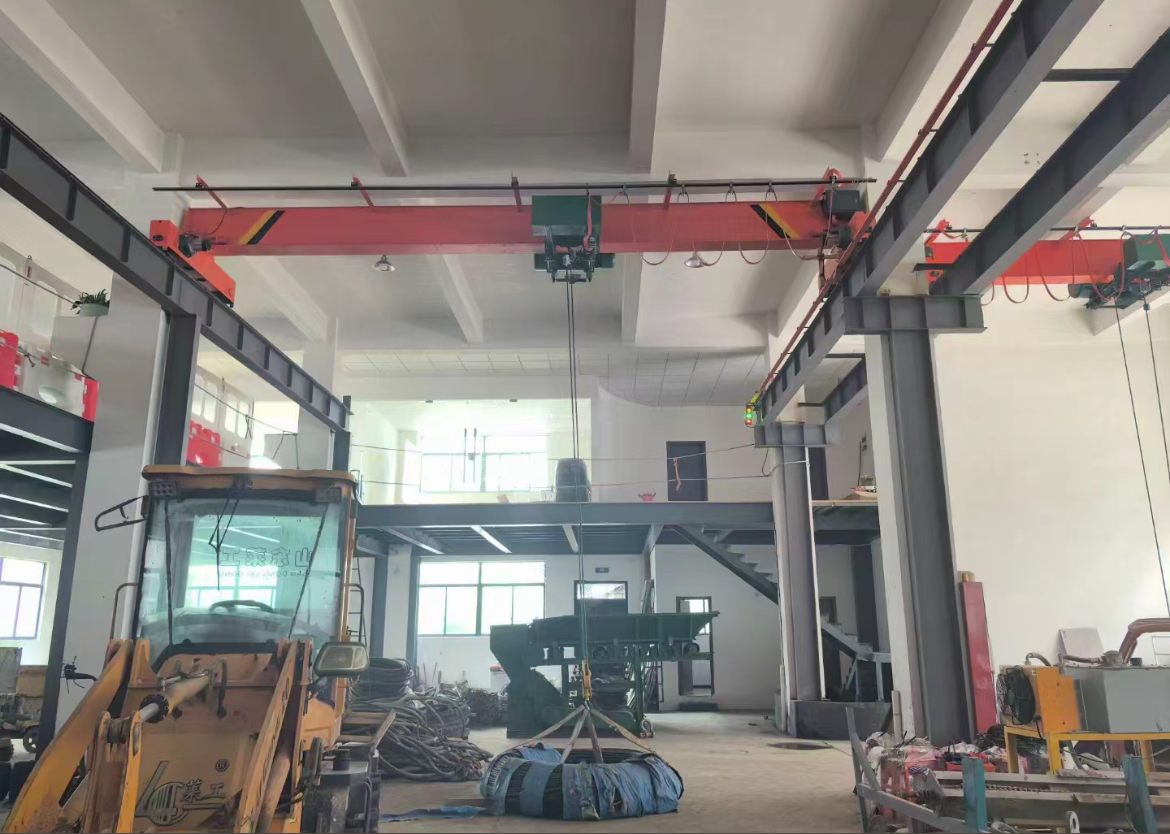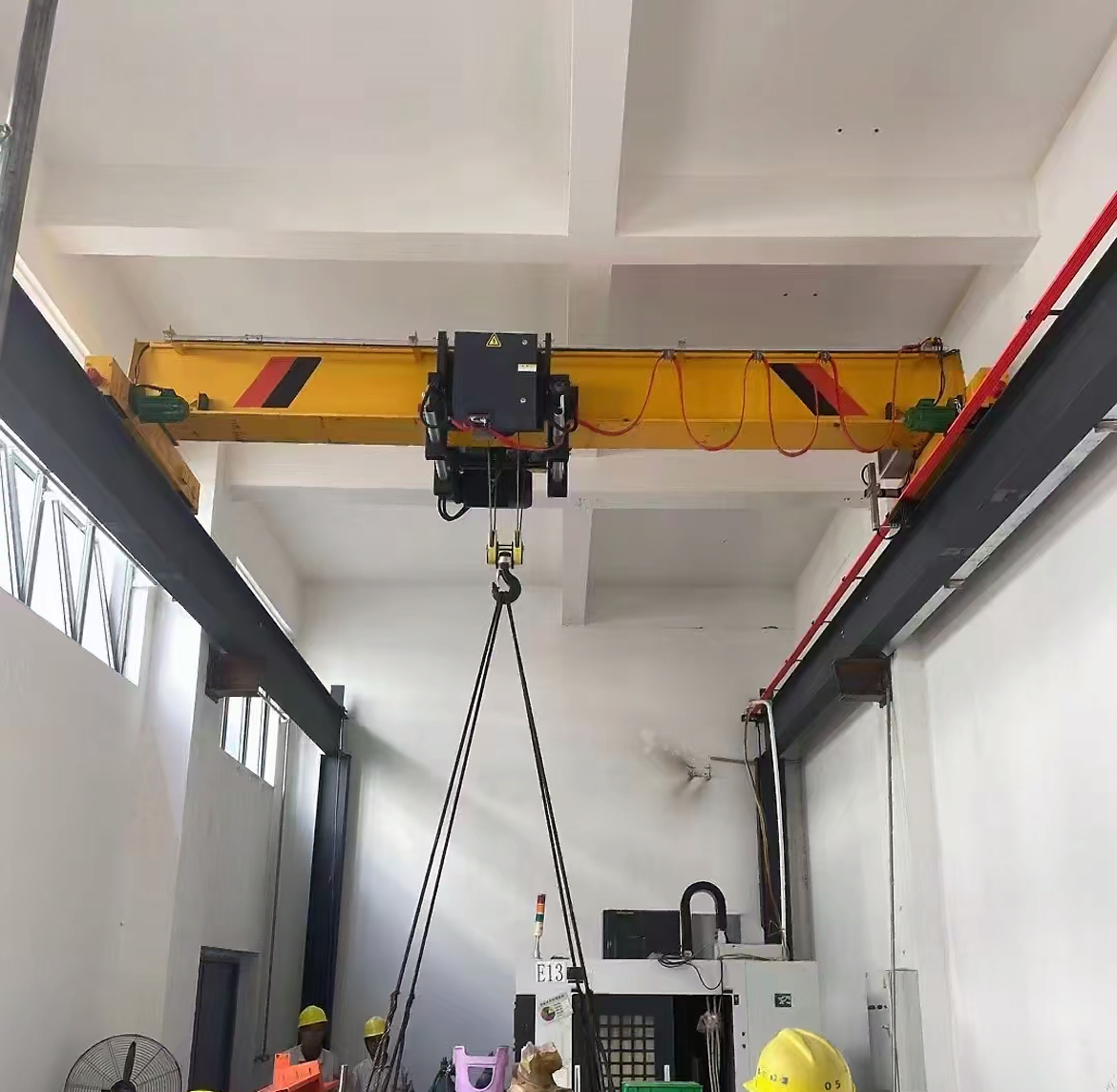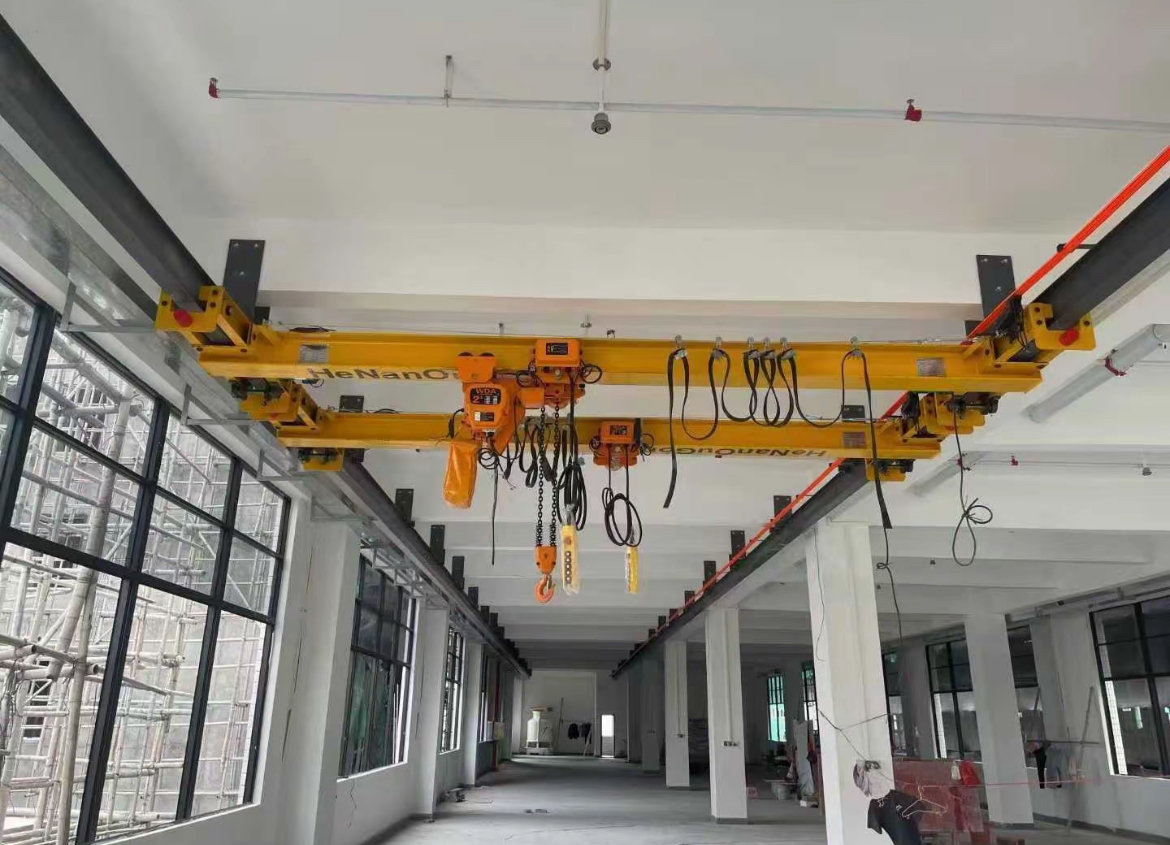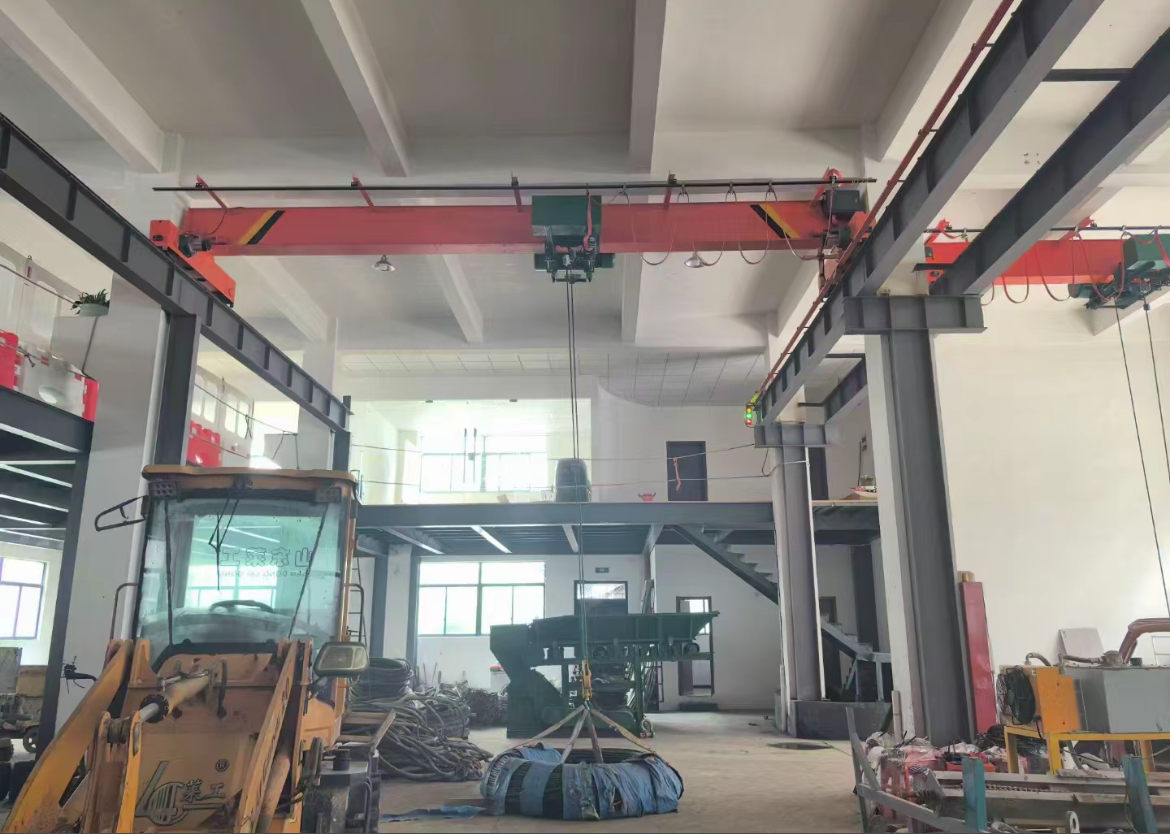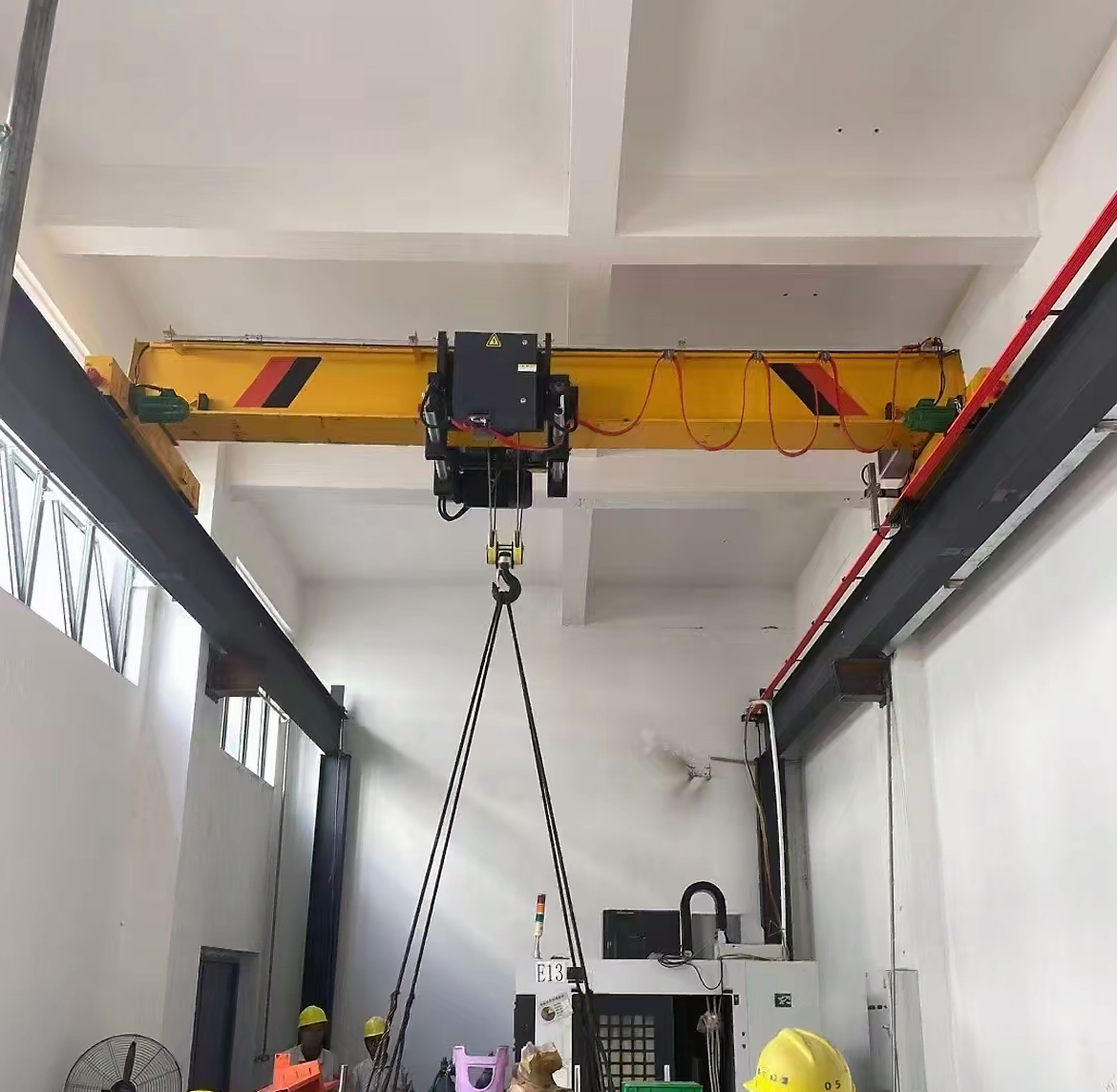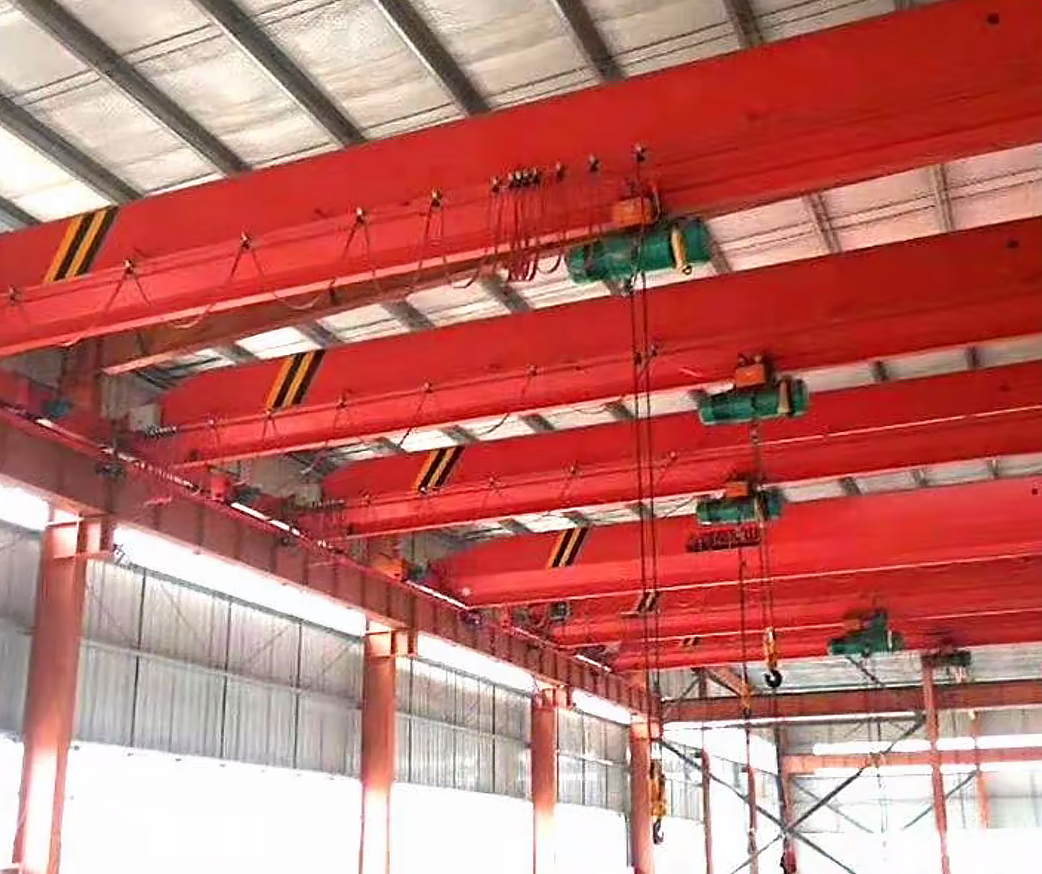| Lifting Capacity | 1-10t |
| Span | 7.5m-28.5m |
| Lifting Height | Commonly 9m, 12m, 15m, 18m, 20m, etc., maximum up to 30m |
| Working Class | A6 |
| Working Environment | Temperature: -25°C to +60°C; Relative Humidity: ≤85%; Altitude: ≤2000m; No corrosive media, fire, or explosion hazards |
| Power Supply | Three-phase AC, Rated Frequency: 50Hz, Rated Voltage: 380V |
| Lifting Speed | 8m/min or 7m/min; some models with dual speeds such as 8/0.8m/min, 7/0.7m/min |
| Trolley Traversing Speed | 20m/min |
| Crane Traveling Speed | Normally 20m/min or 30m/min for ground operation |
| Motor Type | Cone-shaped squirrel-cage motor |
| Lifting Motor Power | 1.5kW (1t), 3kW (2t), 4.5kW (3t), 7.5kW (5t), 13kW (10t), etc. |
| Trolley Traversing Motor Power | 0.4kW, 0.8kW, etc. |
| Crane Traveling Motor Power | 0.8×2kW, 1.5×2kW, etc. |
| Wheel Diameter | 270mm, 400mm, etc. |
| Track Surface Width | 37mm-70mm |
| Noise Standard | ≤85dB(A) for lifting capacity Q≤5t; ≤90dB(A) for Q≥5t |
| Control Method | Ground control, remote control |
| Recommended Track Model | I20a-I45c, I40b-I63c |


